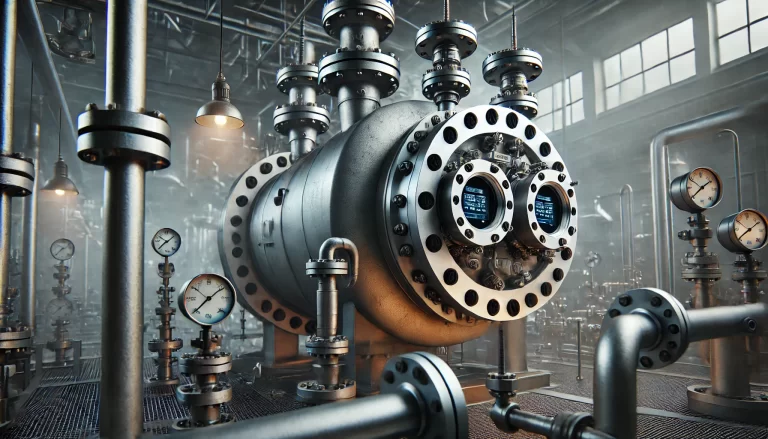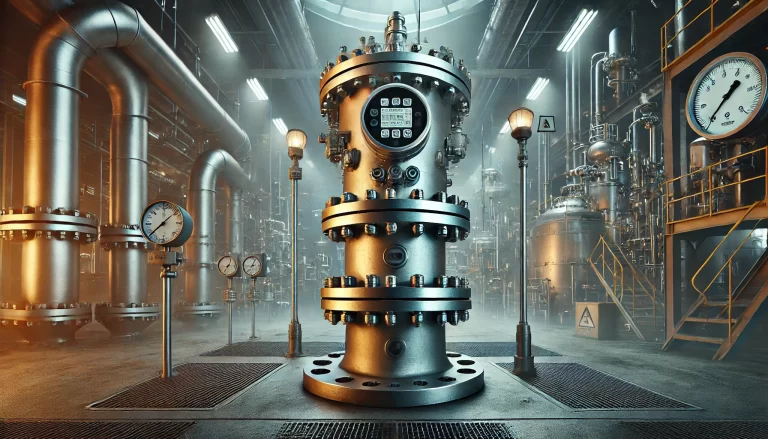Dual flange level transmitters are essential instruments in the industrial measurement landscape, widely employed for monitoring liquid levels, density, and pressure differences in various applications. Their robust design and advanced capabilities make them particularly suitable for demanding environments involving corrosive, viscous, or high-temperature and high-pressure media. This article explores the advantages of dual flange level transmitters in greater detail.
1. Versatility for Complex Conditions
One of the standout features of dual flange level transmitters is their ability to operate effectively under challenging industrial conditions.
- Handling Corrosive Media: Dual flange designs shield the internal components from direct contact with aggressive chemicals, making them ideal for industries like chemical processing where strong acids or alkalis are present.
- Seamless Operation in Sealed Containers: These instruments are perfect for sealed or pressurized containers such as reactors or storage tanks, providing accurate readings even when the internal environment is inaccessible.
2. High Stability and Reliability
Dual flange level transmitters are engineered to deliver consistent performance, even in environments prone to operational disturbances.
- Clogging and Leakage Prevention: The flange connection creates a secure seal, preventing leaks and reducing the risk of blockages when handling viscous or crystallizing media.
- Resistance to Vibrations: Industrial equipment often experiences mechanical vibrations. Dual flange transmitters are designed to resist such disturbances, maintaining measurement accuracy and stability.

3. Exceptional Measurement Accuracy
Accuracy is paramount in industrial instrumentation, and dual flange level transmitters excel in this regard.
- Precise Liquid Level Monitoring: Leveraging the differential pressure measurement principle, these instruments accurately reflect liquid levels, even in environments with fluctuating conditions.
- Temperature Compensation: Advanced models incorporate temperature compensation, ensuring minimal errors caused by environmental temperature variations, which is especially crucial in high-precision industries.
4. Durability and Longevity
Dual flange level transmitters are built to withstand the rigors of industrial environments, offering extended service life and robust performance.
- Withstanding Extreme Conditions: Designed for high-temperature (over 200°C) and high-pressure applications, they are suitable for harsh environments such as oil refineries and chemical plants.
- Corrosion-Resistant Materials: Wetted parts are often made from durable materials like 316L stainless steel, Hastelloy, or titanium, ensuring longevity in the presence of corrosive substances.
5. Flexible Installation Options
The design of dual flange level transmitters allows for versatile installation methods, catering to diverse industrial needs.
- Adaptable Mounting Configurations: Depending on the specific setup, the devices can be installed using flange, thread, or other mounting options, ensuring compatibility with various industrial equipment.
- Remote Installation Capabilities: For applications where direct installation is impractical (e.g., due to extreme heat or corrosive fumes), these transmitters can be mounted remotely to ensure operational safety and convenience.

6. Cost-Efficient Maintenance
The robust construction and intelligent design of dual flange level transmitters contribute to lower maintenance costs.
- Online Cleaning and Calibration: Many models feature the ability to be cleaned and calibrated without dismantling, minimizing downtime and labor requirements.
- Reduced Repair Frequency: Thanks to their durable design and resistance to environmental stressors, these transmitters experience fewer breakdowns, reducing repair and replacement expenses.
Typical Applications of Dual Flange Level Transmitters
The versatility of dual flange level transmitters makes them indispensable across various industries:
- Chemical Processing: Ideal for monitoring levels of highly corrosive liquids.
- Oil and Gas: Effective in high-temperature, high-pressure environments such as crude oil storage and refining processes.
- Food and Beverage: Useful for sanitary and non-contaminating liquid level measurements.
- Water Treatment: Accurate in measuring levels in sedimentation tanks or corrosive waste fluids.
Conclusion
Dual flange level transmitters offer unparalleled advantages in precision, adaptability, and durability, making them an excellent choice for liquid level and differential pressure measurements in industrial settings. Their ability to handle extreme conditions, coupled with their cost-effective maintenance and versatile installation options, ensures their position as a critical component in modern industrial instrumentation. By investing in these advanced devices, industries can achieve higher operational efficiency and measurement accuracy while minimizing downtime and costs.
